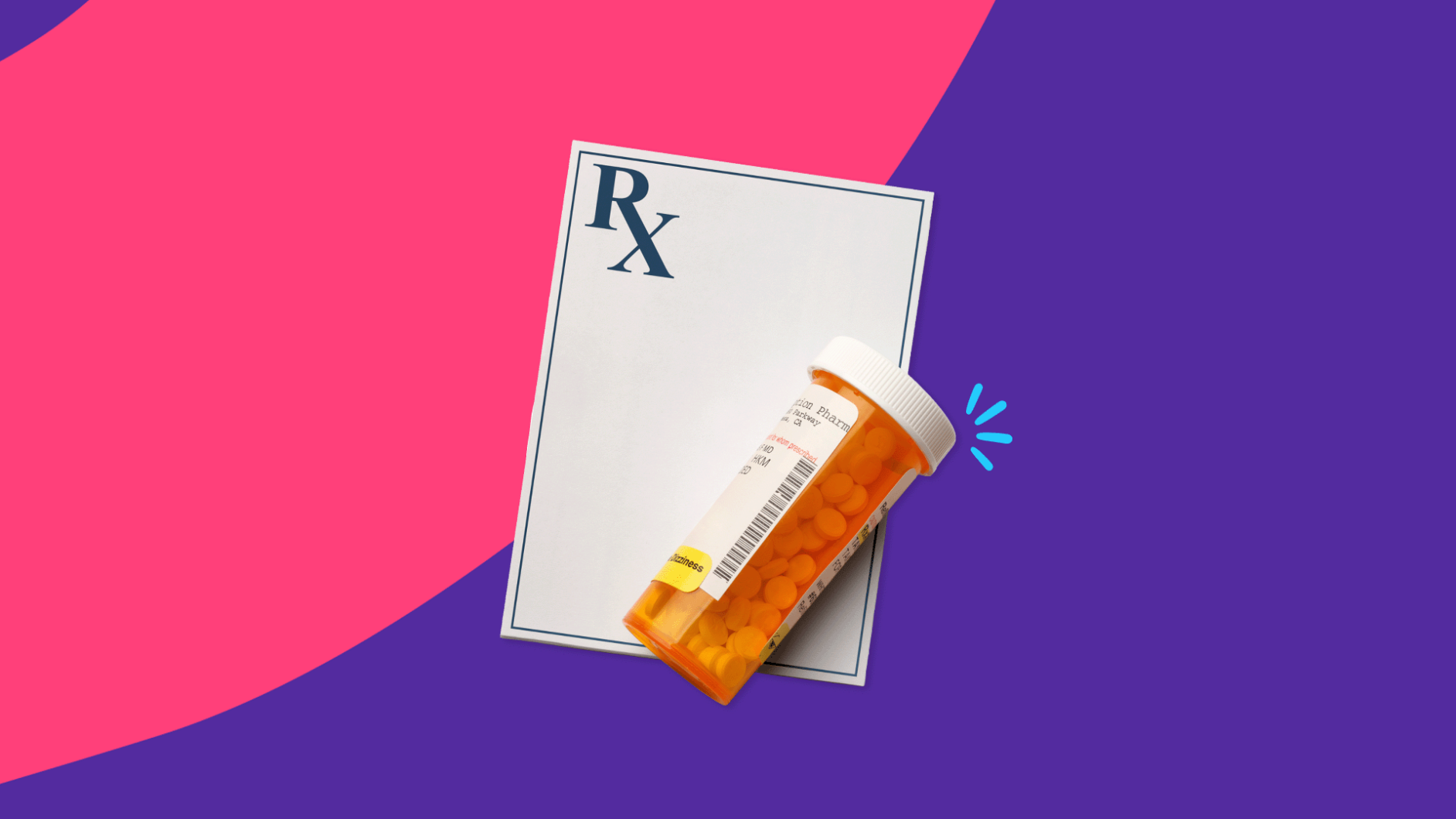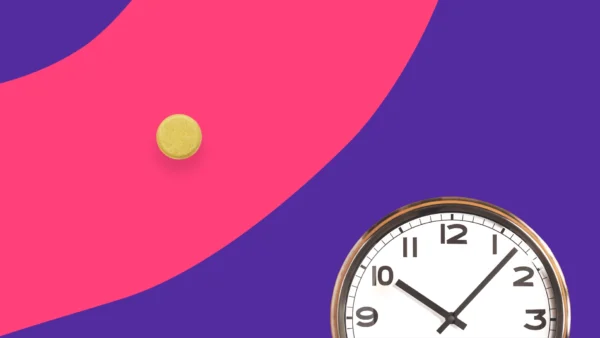Gabapentin is a generic medication approved by the Food and Drug Administration (FDA) to treat postherpetic neuralgia (nerve pain after shingles), epilepsy, other seizure disorders, and restless leg syndrome. Available under the brand names Neurontin, Gralise, and Horizant, gabapentin is also commonly prescribed off-label for general nerve pain, migraines, and bipolar disorder. Off-label use is when a drug is used for a purpose other than what it is approved for. Gabapentin belongs to a class of drugs called anticonvulsants, also known as antiepileptics, and it is thought to work by blocking chemicals in the brain that cause excitation.
While gabapentin is used to treat many different conditions, like most other drugs, it has a risk of drug interactions. Drug interactions may affect how well gabapentin works, or it can worsen the side effects of gabapentin. It’s essential to be aware of gabapentin interactions to avoid them before they occur. This way, the treatment will be as safe and effective as possible.
Key takeaways:
- Gabapentin can cause dizziness and drowsiness. Combining the use of gabapentin with certain other drugs can worsen these side effects.
- Taking gabapentin with CNS depressants, including opioids, can lead to serious and life-threatening breathing problems.
- Some antacids can interact with gabapentin and make it less effective.
- Mixing gabapentin and alcohol is not recommended.
- Discuss all of the medications being taken and any medical conditions with a healthcare provider so they can help prevent gabapentin interactions.
Gabapentin-drug interactions
Gabapentin can interact with various prescription and over-the-counter medications. Specifically, it may interact with opioid medications and some heartburn medications. Below are some of the potential drugs that gabapentin can interact with.
Opioids
Opioids are a group of drugs used to treat pain. They share some of the same side effects as gabapentin, such as sleepiness and respiratory depression. Taking these medications together can worsen these side effects and increase the risk of severe sleepiness, difficulty breathing, coma, and even death.
If possible, gabapentin should not be taken with opioid medications. Talk to a healthcare provider about alternative pain treatments if taking gabapentin. If both medications are prescribed, call for emergency medical help immediately if extreme sleepiness or slow or shallow breathing occurs.
Examples of opioids include:
- MS Contin (morphine sulfate)
- Roxicodone (oxycodone)
- Percocet (oxycodone/acetaminophen)
- Norco (hydrocodone/acetaminophen)
Antacids
Antacids are medications used to relieve heartburn. There are many different antacids on the market. If taking gabapentin, try to avoid any that contain aluminum hydroxide or magnesium hydroxide. Examples of these antacids are Maalox and Mylanta.
Combining these medications can lower the levels of gabapentin in the body, which makes it less effective. If taking gabapentin and suffering from heartburn, talk to a healthcare professional about other treatment options. If an aluminum or magnesium hydroxide antacid must be taken, wait at least two hours after taking the antacid to take gabapentin.
Central nervous system (CNS) depressants
CNS depressants are medications that slow down brain activity. They are generally used to treat conditions such as anxiety, sleep disorders, and muscle spasms. Side effects of CNS depressants include drowsiness and trouble breathing.
Gabapentin is a CNS depressant, so taking it with other CNS depressants can lead to severe sleepiness and, in some cases, trouble breathing. In fact, in 2019, the FDA issued a warning about the risk of serious breathing problems when combining gabapentin with CNS depressants. Older adults and people with a history of lung conditions, such as asthma or COPD, are at higher risk of serious breathing difficulties.
Examples of CNS depressants include:
- Benzodiazepines: Xanax (alprazolam), Ativan (lorazepam), Klonopin (clonazepam)
- Antihistamines: Benadryl (diphenhydramine), Vistaril (hydroxyzine)
- Sedatives: Ambien (zolpidem), Lunesta (eszopiclone)
- Muscle relaxants: Flexeril (cyclobenzaprine), baclofen
Gabapentin-food interactions
Sometimes, foods can interact with medications. Fortunately, gabapentin does not interact with any known foods, so that it can be taken with or without food.
Other gabapentin interactions
While interactions with other drugs usually result in the most serious effects, medicines also have the potential to interact with other substances, such as alcohol, caffeine, or supplements. Knowing how these substances affect gabapentin can ensure safe and effective treatment.
Gabapentin and alcohol
Gabapentin alone can cause sleepiness, dizziness, and trouble concentrating. Mixing alcohol with gabapentin can worsen these side effects. So, it’s best to avoid alcohol if taking gabapentin.
Gabapentin and caffeine
While caffeine doesn’t interact directly with gabapentin, caffeine can worsen anxiety and sleep disorders, which are two conditions that gabapentin may be prescribed off-label to treat. Consuming caffeine in moderation is recommended to prevent anxiety symptoms.
Gabapentin and disease
Health risks in people with certain medical conditions may be linked to Gabapentin. These include people with the following conditions or health factors:
- Lung conditions, including asthma or COPD
- Mental health conditions, including depression
- Diabetes
- Kidney disease
- Pregnancy or breastfeeding
If any of the conditions mentioned earlier are present, a potential need for adjusting the dose of gabapentin or closer monitoring may be required. Seeking medical advice from a healthcare provider is advisable before starting gabapentin.
Gabapentin and lab tests
Gabapentin can trigger a false positive result on certain urine tests. This includes the Ames N-Multistix SG dipstick test that screens for protein in the urine. A false positive result means the test can show that a substance is present when it isn’t.
Be sure to inform the provider that gabapentin is being taken if this test is scheduled.
Gabapentin and cannabis
Cannabis is another CNS depressant that can interact with gabapentin. Using gabapentin and cannabis together can make side effects such as drowsiness, dizziness, and trouble focusing more likely.
Before starting gabapentin, let the provider know if cannabis is being used. This may determine whether gabapentin is the right choice.
How to minimize gabapentin interactions
Combining gabapentin with certain drugs can cause serious side effects, such as trouble breathing. That’s why it’s crucial to minimize the risk of interactions as best as possible. To do so, keep an updated list of all current medications and medical conditions. Be sure to include all over-the-counter and prescription drugs, vitamins, herbs, and supplements. Share this list with the provider and pharmacist so they can screen for any interactions. They can adjust dosages, monitor for side effects, and recommend alternatives if they identify a gabapentin interaction. A medication guide with important drug information can be obtained from a pharmacist or prescribing doctor.
When to talk to a healthcare provider about gabapentin interactions
Whenever a new medication is started, it’s important to ask a healthcare provider or pharmacist if it will interact with other medications. That way, potential interactions can be avoided before they occur. Also, discuss any new side effects or changes in any conditions. In some cases, these may be related to drug interaction.
This article does not contain a complete list of all gabapentin interactions. So, it’s important to communicate openly with healthcare providers to ensure proper health management.
Sources
- Gabapentin for off-label use: evidence-based or cause for concern, Substance Abuse: Research and Treatment (2018)
- Gabapentin, StatPearls (2022)
- Prescription CNS depressants drug facts, National Institute on Drug Abuse (2018)
- Neuropsychiatric effects of caffeine, Advances in Psychiatric Treatment (2018)
- Gabapentin capsules, for oral use, DailyMed (2023)











